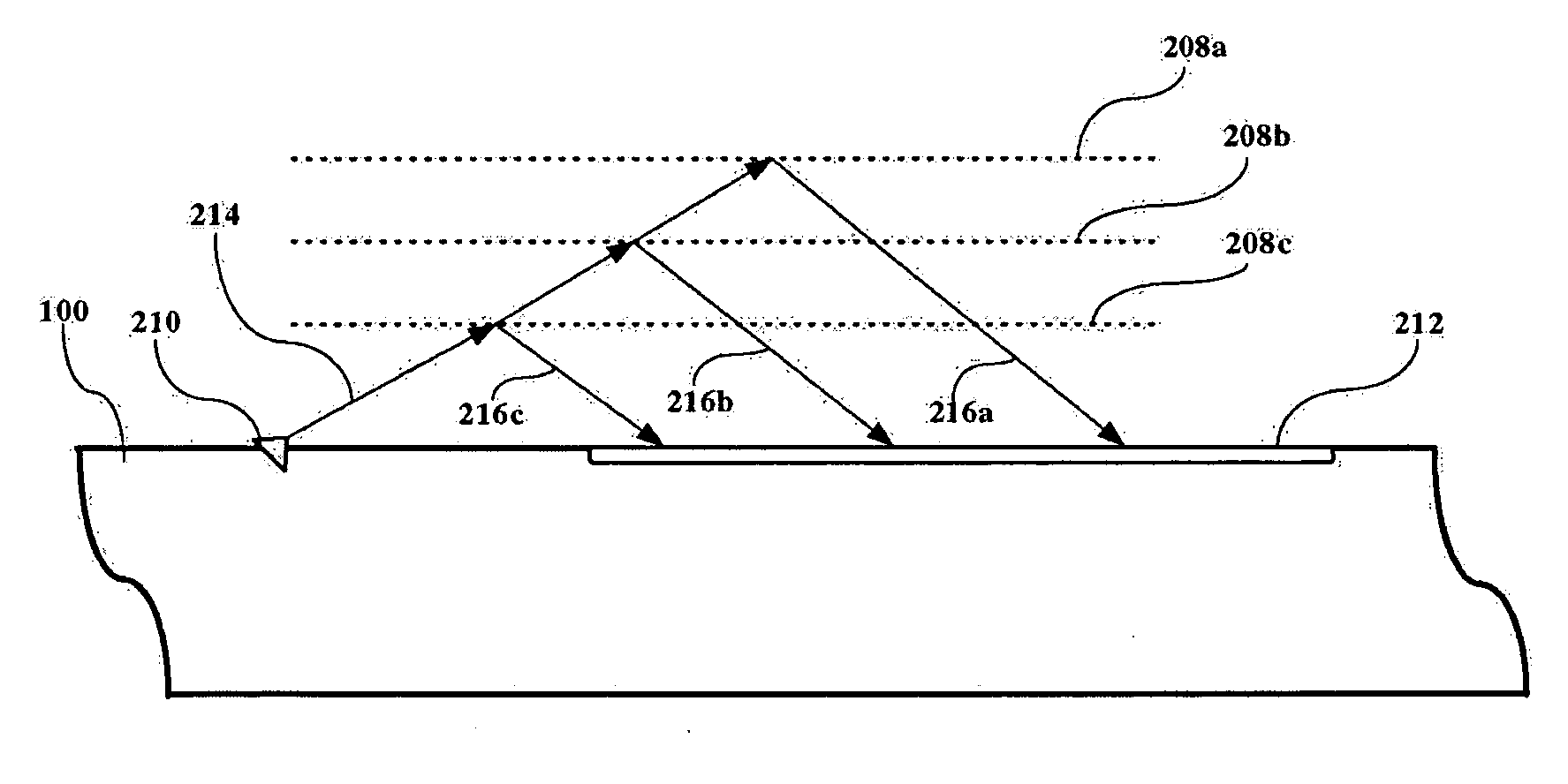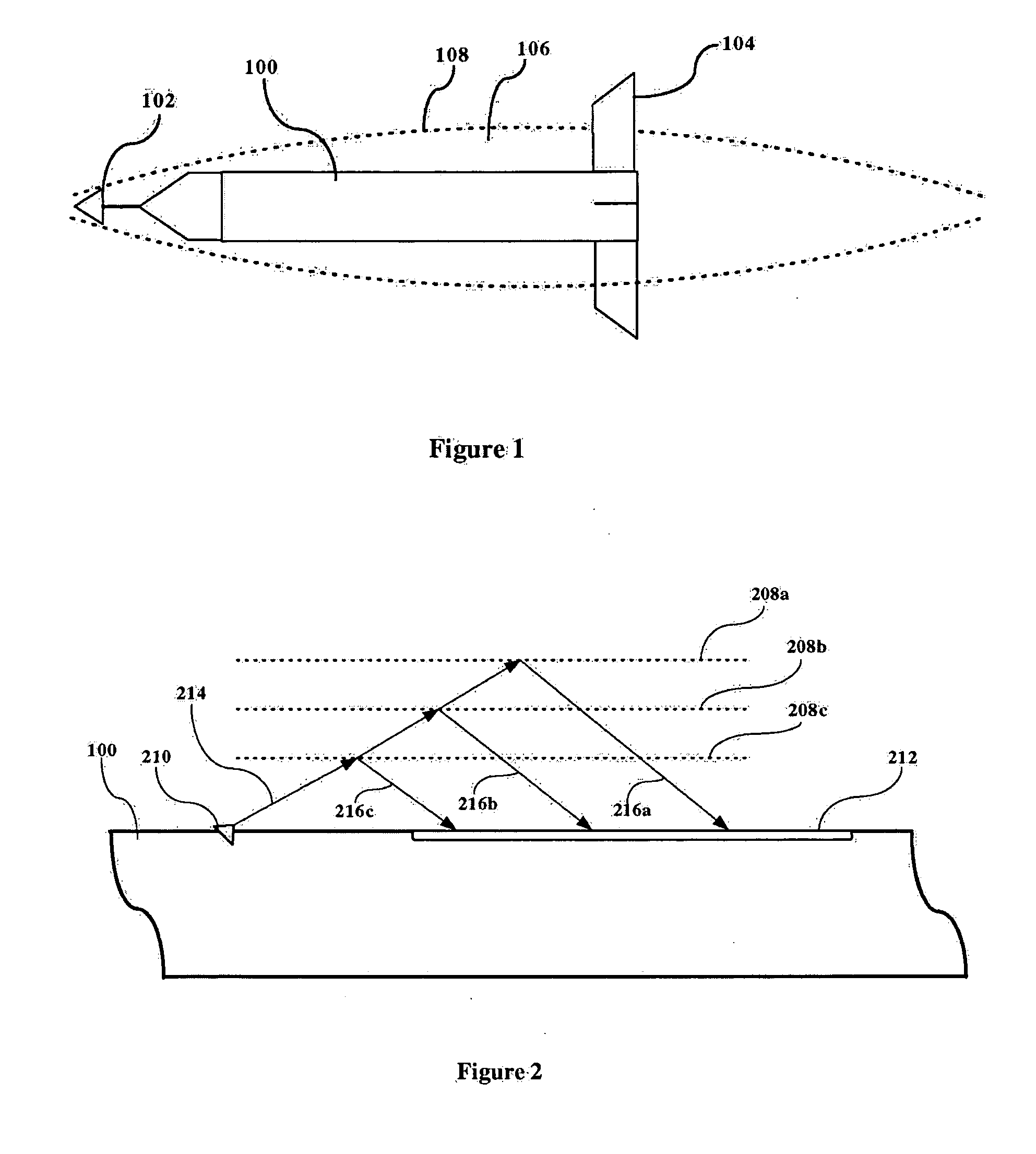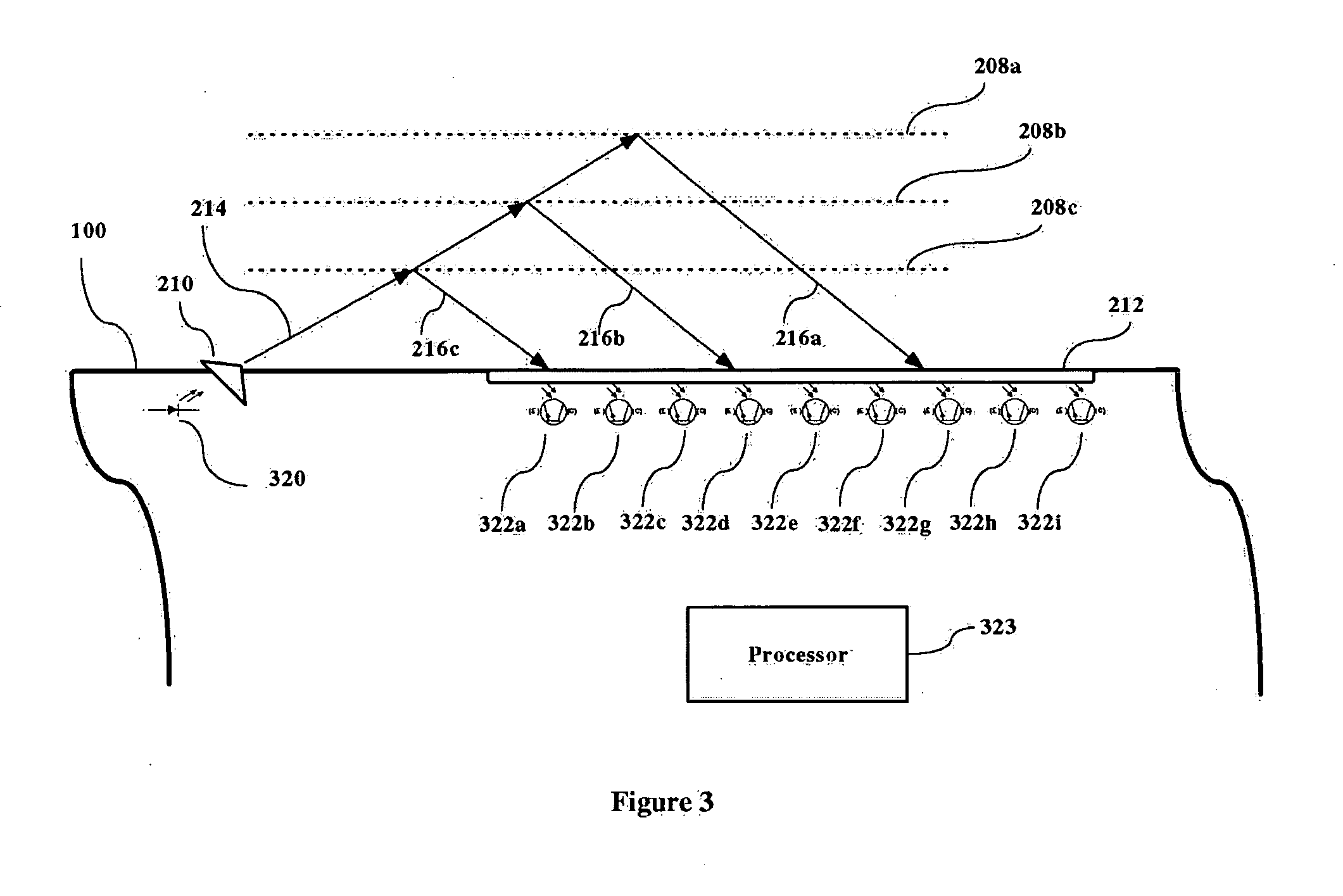Sensor elements for supercavitating vehicles
- Summary
- Abstract
- Description
- Claims
- Application Information
AI Technical Summary
Benefits of technology
Problems solved by technology
Method used
Image
Examples
Embodiment Construction
[0015] The present invention is a method and system for sensing the presence of changing media having differing indices of refraction, e.g., gas or liquid, around a sensor, and in a preferred embodiment, this information is used for monitoring the location of the cavity wall surrounding a supercavitational vehicle, relative to that vehicle. The examples illustrated herein all pertain to underwater vessels where the vessel is operating in water and the cavity is formed by the absence of water created by a cavitation. However, it is understood that the sensors of the present invention can be used in any environment where the sensor is in contact with media having differing indices of refraction; air and water are used for the purpose of example. It is contemplated that a shock boundary between two gaseous media (as would be found in a supercavitating missile operating in the earth's atmosphere) could be detected using the principles of the present invention.
[0016]FIG. 1 illustrates t...
PUM
 Login to View More
Login to View More Abstract
Description
Claims
Application Information
 Login to View More
Login to View More - R&D Engineer
- R&D Manager
- IP Professional
- Industry Leading Data Capabilities
- Powerful AI technology
- Patent DNA Extraction
Browse by: Latest US Patents, China's latest patents, Technical Efficacy Thesaurus, Application Domain, Technology Topic, Popular Technical Reports.
© 2024 PatSnap. All rights reserved.Legal|Privacy policy|Modern Slavery Act Transparency Statement|Sitemap|About US| Contact US: help@patsnap.com










